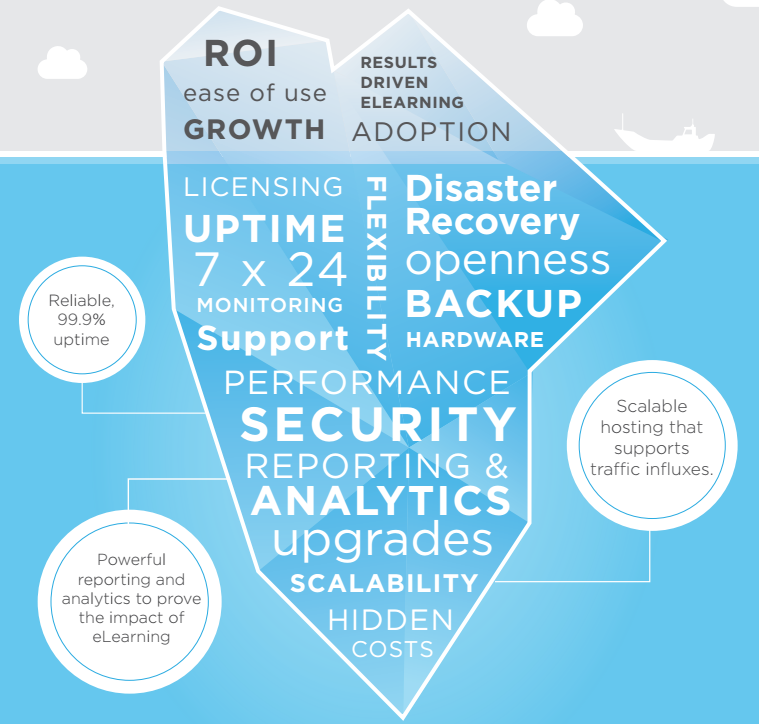Last week we published a blog on the hidden costs of an open source LMS, we covered services and extended features, including LMS Support, LMS Training, Setup & Configuration, Ongoing Support, LMS Reporting, and LMS Theming. Here is Part 2 of the blog.
LMS Hosting & Infrastructure
1. Hosting Infrastructure
This is essentially what is going to be storing and running your system. Hosting packages, and how your system operates, will differ greatly depending on the vendor you’re working with, and the software you purchase. For example, proprietary systems typically keep their systems under lock and key, allowing you to access your system only through their infrastructure. With open source, hosting packages can be created quite differently from one another, so you should have the option of how you want your system to be operated and installed. One of the core considerations we see clients run into is whether data can be stored outside the United States. For organizations based outside of the U.S., this is crucial. Having someone who can provide you with options, and who can bring up your instance within those locations is something to consider.
2. LMS Storage
Storage is another important consideration. It’s very typical for your LMS to store a lot of content, whether it be video, or multimedia, or learning records. Having storage allowance that perhaps tie in with the media serving applications is going to be something you’ll want to pay attention to.
3. LMS Migrations & Upgrades
With open source LMS, there are certain versions of the application that are produced frequently, and you will get periodic major and minor upgrades as they come. This can work in regards to migrations as well - the migration itself requires movement, either of the site as a whole, or some courses and user information, and can involve moving quite significant amounts of data, and a considerable amount of time.
4. LMS Integration & Custom Development
It’s important to have a system that is compatible with the rest of your IT infrastructure; this is something that is usually identified at the beginning and tends to come after the initial onboarding. It’s common to have integrations related to user synchronization and authentication, so tying these in with internal HR systems and other platforms is something these integrations typically do. With the predominance of web services and API’s, there should be no limitation to the information shared between applications.
When it comes to authentication pieces, the process could be quite complex, meaning that it should be something your vendor needs to be quite proficient in. This process is typically handled by training, support, and development teams, depending on what’s involved. You can also start moving into the custom realm; a lot of applications have these services as out-of-the-box features, but you might need something specific or customized. The customization piece can be applied across the LMS. Having an LMS that is customizable is important to your organization as a whole.
You can also watch our recorded webinar on Costs Associated with an Open Source LMS.






